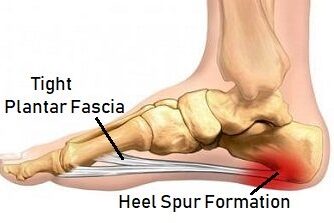Bone Spurs
- A bone spur or osteophyte is a small extra outgrowth of bone.
- Bone spurs are usually caused by local inflammation e.g from osteoarthritis or tendonitis.
- They tend to develop in areas of inflammation or injury
- Bone spurs may not always cause symptoms.
- However, in many cases they do cause pain and other associated symptoms depending on where they are located.
- Bone spurs are diagnosed by X-ray, MRI or Ultrasound images.
- Bone spurs are treated only if they are causing symptoms.
- Initial treatment is usually directed towards decreasing the local inflammation and avoiding further injury
Causes
Bone spurs are usually caused by local inflammation, such as from osteoarthritis or tendinitis. This inflammation stimulates the cells that form bone to deposit bone in this area, eventually leading to a bony prominence or spur. e.g inflammation of the ligament that surrounds a degenerating disc between the vertebrae is a very common cause of bone spurs of the spine.
Inflammation of the Achilles tendon can lead to the formation of a bone spur at the back of the heel bone.
Inflammation of the tissue on the bottom of the foot called plantar fasciitis can lead to a bone spur under the heel.
Heel spurs can cause pain in the foot which can lead to increasing problems on weight bearing. This in turn can lead to inflammation of the whole sole of the foot called plantar fasciitis.

Spurs in the spine can pinch adjacent nerves to cause numbness, tingling, and pain as well as weakness in the area of the body supplied by the affected nerve.
Some bone spurs do not cause any symptoms and are only picked up if an X-ray is performed for another reason.
Treatment for bone spurs
They are only treated if they are causing symptoms.
The first aim of treatment is to decrease inflammation by using Ice and anti -inflammatory medications either orally or by local injection.
Orthotics and local bone spur pads may be used depending on the location of the bone spur.
Bone spurs that are causing irritation of nerves, tendons or ligaments and that are resistant to conservative measures may need surgery if they do not settle with conservative measures.
Extracts from medicinenet.com

